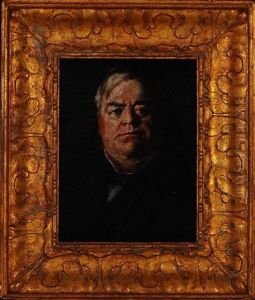James L. Fitzgibbon Paintings
James L. Fitzgibbon was an American architect who played a significant role in the development of modern architecture in the 20th century. Born in 1919, Fitzgibbon had a career that was deeply influenced by the principles of modernism, which he adeptly integrated into his architectural designs.
Fitzgibbon's architectural education was shaped by his time at Cranbrook Academy of Art in Michigan, where he was mentored by renowned Finnish architect Eliel Saarinen. Saarinen's influence on Fitzgibbon was profound, instilling in him a love for clean lines, functional design, and a harmonious relationship between buildings and their surrounding environment. This early exposure to Saarinen's work and philosophy laid the foundation for Fitzgibbon's own architectural style, which would evolve over the years.
Throughout his career, Fitzgibbon was known for his ability to blend aesthetic simplicity with practical functionality. His designs often featured open floor plans, natural light, and a seamless integration of indoor and outdoor spaces. Despite his clear modernist leanings, Fitzgibbon did not strictly adhere to any single architectural dogma; rather, he adapted his approach to suit the specific needs of each project, always with an eye towards creating spaces that were both beautiful and livable.
Fitzgibbon's work was not limited to residential architecture; he also made notable contributions to commercial and public architecture. His portfolio includes a range of building types, from private homes to educational institutions and corporate buildings. His commitment to modernism was not just aesthetic but also ideological, as he believed that architecture should serve the needs of society and enhance the lives of its inhabitants.
James L. Fitzgibbon passed away in 1977, but his legacy lives on through his contributions to modern architecture. His buildings stand as testaments to his vision and skill, and his influence can still be seen in the work of subsequent generations of architects who have drawn inspiration from his commitment to a modernist ethos that is both functional and humanistic.

